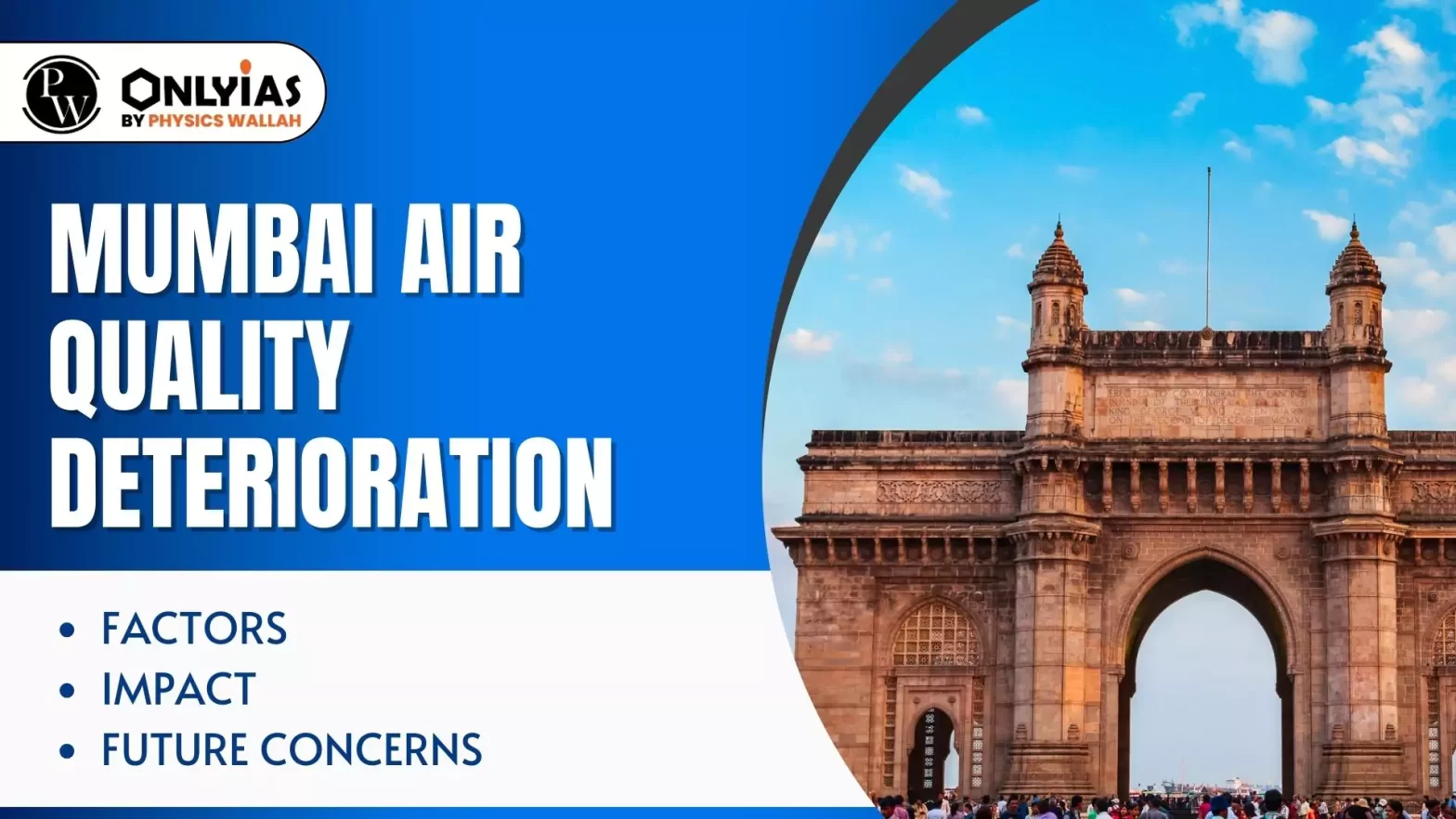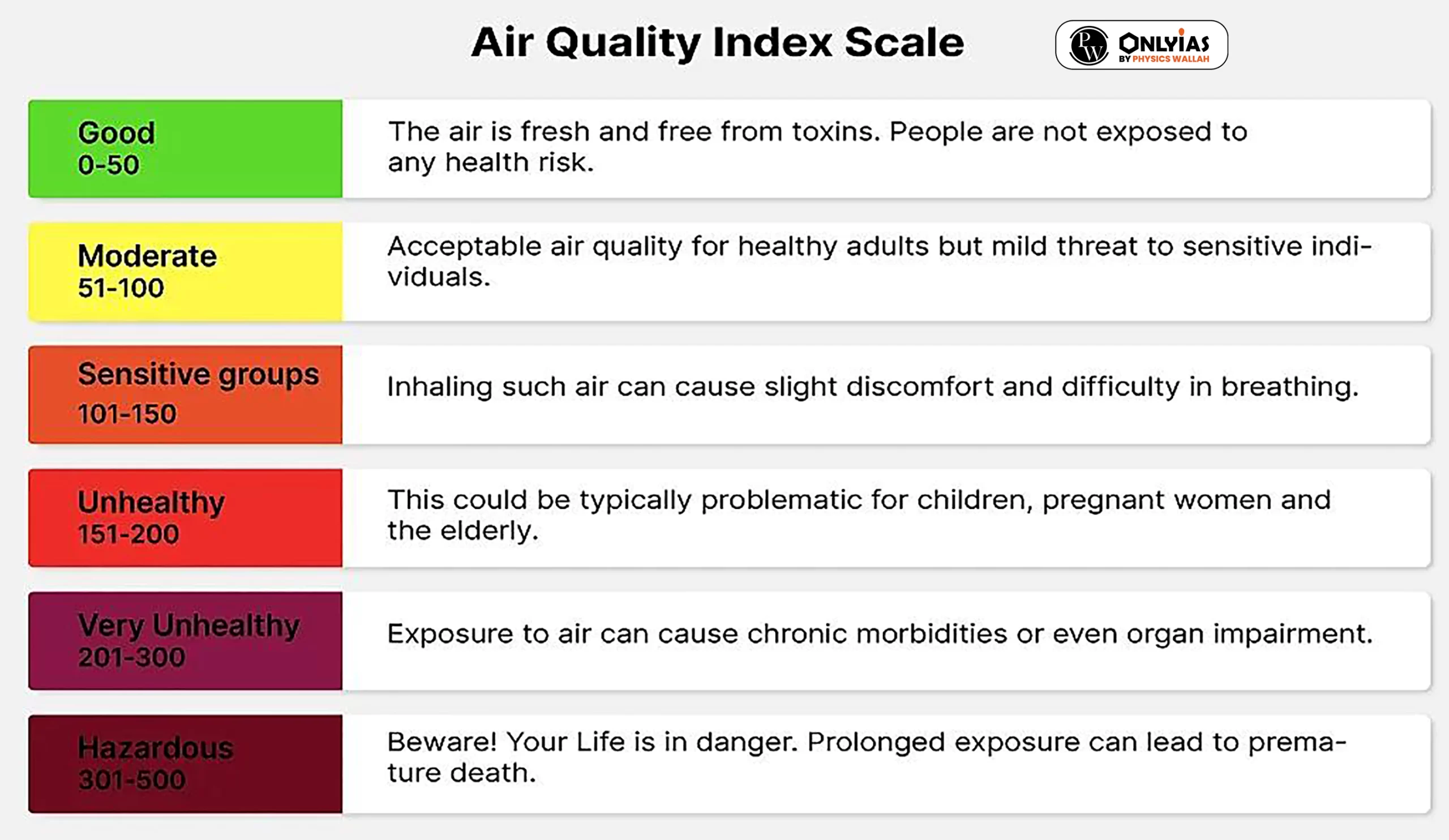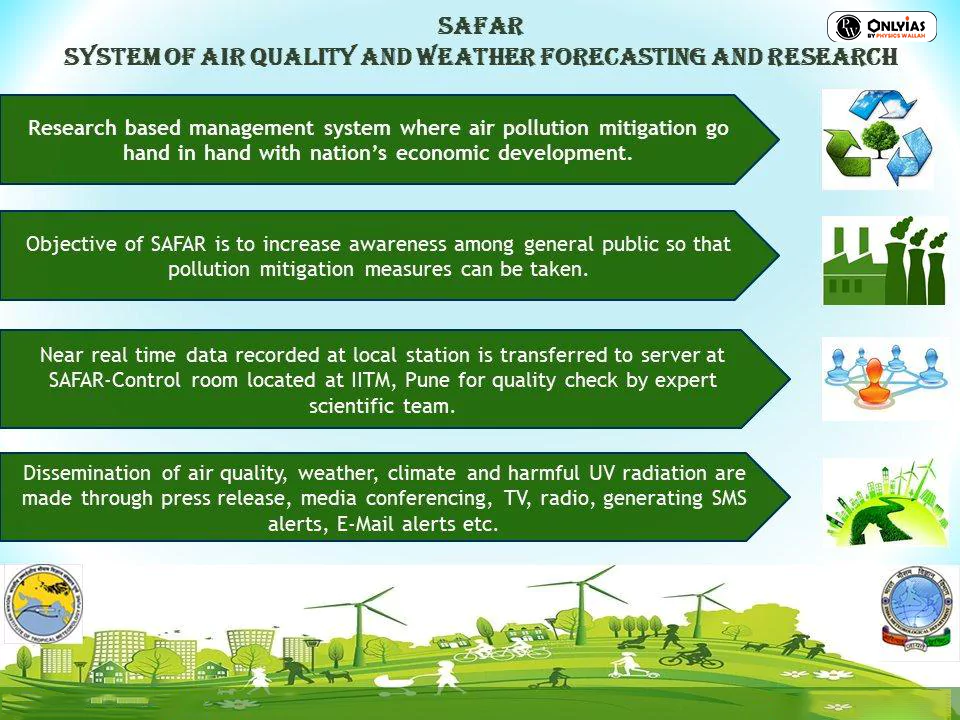Context: Recently, the Mumbai Air Pollution reached to ‘very poor’ category in the National Air Quality Index.

Also Read: Air Quality Life Index (AQLI) Report


| Must Read | |
| NCERT Notes For UPSC | UPSC Daily Current Affairs |
| UPSC Blogs | UPSC Daily Editorials |
| Daily Current Affairs Quiz | Daily Main Answer Writing |
| UPSC Mains Previous Year Papers | UPSC Test Series 2024 |
Rise in pollution levels in the city has been attributed to development projects such as metro, increase in traffic, climate change etc.
National Air Quality Index is a measurement of quality of air in a given area. The index makes use of colour code to determine the air quality within a given area.
The Central Pollution Control Board gives the Air Quality Index in form of National Air Quality Index (NAQI), which is a 24-hr average.
The National Air Quality Index will use PM10, PM2.5, NO2, SO2, CO, O3, NH3, and Pb pollutants for determining air quality.
The National Air Quality Index is operational across the cities of New Delhi, Kolkata, Mumbai, Pune, and Ahmedabad.
SAFAR is an air quality monitoring system introduced by the Ministry of Earth Sciences (MoES). It aims to provide location specific information on air quality in near real time, giving forecast upto 3 days in India.

<div class="new-fform">
</div>